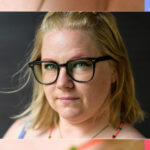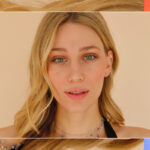Theresa Slater
Artist
-
I'm Coming Out

Welcome to our last I’m Coming Out feature! Sharing their journey with us is Theresa Slater (she/they), a neuroqueer artist living in Tkaranto, Canada as a painter, writer, step-parent, and non-profit arts manager. And just like their art, their story is one of a kind.
In 1994, I chose to identify as bisexual and have been sequentially coming out every day since. When I told my grade 9 BFF that I was bi, she was mortified. She felt betrayed because we used to share a bath. And that’s when I learned that my bisexuality would change all my relationships. When you’re attracted to your own gender and to any other gender, everyone thinks you’re coming out to them to come on to them.
In 2003, I nested with my girlfriend for 2 years before she chose to identify as a lesbian to her family and friends. In 2008, I remember choosing to identify as a lesbian (instead of as bi) to the bureaucrat when we went to get our marriage certificate. They had just changed the marriage forms in the database earlier that week. In hindsight, identifying as a lesbian was a lot of internalized bi-erasure. I know now that just because you are in a same-sex relationship, it doesn’t mean you’re lesbian/gay—your queerness is not defined by your relationship. Unfortunately, that marriage ended in 2012.
In 2018, I chose to identify as neuroqueer. Through the concept of neurovariance, I learned I was different because of a spectrum and not a deficiency. My neuroqueer spectrum diffracts into something like: adhd-cptsd-bipolar-(likely)asd-genderfluid-femme-bisexual-sapiosexual-polyamorous-kinky-switching. (It’s a verb.)
As author Nick Walker said in her essay about neuroqueering, “You’re neuroqueer if you neuroqueer.” And I neuroqueer by stimming in public. I binge the same song for months and dance down Queen Street in Tkaranto indulging in public space and embodying liberty. I’m white, though, and I recognize it is my privilege that allows it to be safe for me to “act a fool” in public.
In 2020, I chose to identify as polyamorous when my mother kept asking why my girlfriend K* was in my “bubble” with me, my boyfriend, D*, and my step-child during the first Covid lockdown. When I explained to her that both D* and I were romantically and sexually involved with K*, she tsk-ed me! It’s the same sound she made when I told her I was bi. It’s the same sound she made when she walked me down the aisle for my same-sex marriage. But at the very least, she politely asked about our girlfriend when she called—I’m lucky. After 3 1/2 years in a loving triad, I urged our boyfriend to choose to identify as polyamorous to his Catholic parents. I shouldn’t have pressured him so much. It wasn’t up to me to decide when someone affirms their queerness. All queerness is valid without proclamation. The news their son was in a triad was met with confusion, but warmth. Truly, as long as everyone involved is consenting, it’s ok if they don’t understand.
Later, when my boyfriend chose to identify as polyamorous to our 12-year-old child, P*, they responded with, “You all did a terrible job hiding it, and why would you be afraid of coming out to a Gen-Zer?” It was a great opportunity to talk about relationships, privacy, and boundaries. Six months earlier, P* orchestrated a scavenger hunt with the final unveiling being a message of the colors purple, white, green: the genderqueer flag. They told us their pronouns, we thanked them for sharing with us, and everyone cried with joy. Then we misgendered them for months. Misgendering someone prompts them to have to come out over and over again. P* has learned young that queering doesn’t happen once, rather it is renewed and ritualized throughout one’s life.
What is my role in liberation? My role is an artist. I demonstrate how to heal your nervous system through embodied and expressive art making. P* is creative. They are an artist and aspiring architect. It’s great to teach them how creativity can be queer! We talk about queering our art practices through concepts such as spectrum, failure, embodiment, play, experimentation, and symbiosis. By encouraging P*’s interest in art-making, they are learning methodologies in imagination, research, and perception—all necessary skills for the young leaders of our future.
*Names initialized to remain anonymous and allow folks the space to tell their own stories when they are ready.



